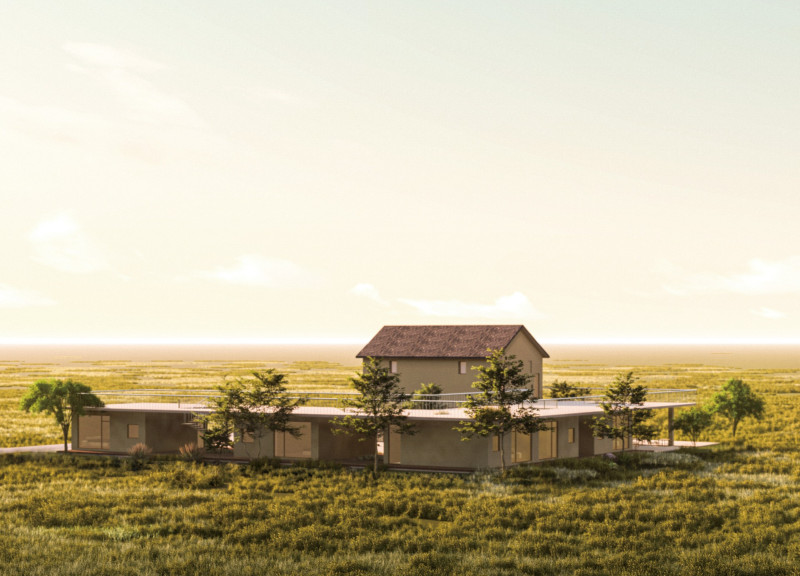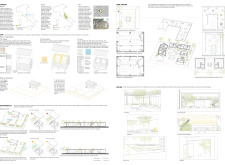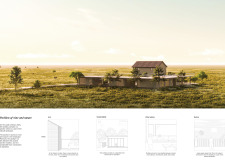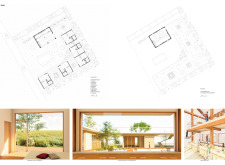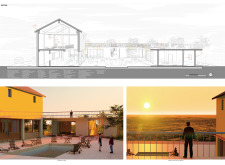5 key facts about this project
The design utilizes cross-laminated timber (CLT) for its structural framework, promoting sustainability through renewable materials. Large glass façades facilitate natural lighting and connect the interior spaces with the picturesque outdoor environment, effectively promoting indoor-outdoor interaction. The inclusion of natural stone in pathways and exterior areas reinforces a strong sense of place and offers contrast to the contemporary materials used.
Spatially, the pavilion is organized around several key areas dedicated to enhancing visitor experiences. The wine tasting bar serves as the focal point, welcoming guests to engage directly with the offerings. Attached living and communal spaces are designed with views of the valley, optimizing the emotional response to the setting. Additionally, a central courtyard provides a flexible space for social activities and events, further integrating the building with its natural surroundings.
Designing with contextual awareness is what sets this project apart. The architecture of the pavilion embraces local materials and traditional construction techniques, ensuring that it resonates with the cultural and historical fabric of the Umbrian Valley. This conscious choice fosters a strong emotional connection for visitors and reinforces the pavilion's role as a community hub.
Sustainability is a core principle embedded throughout the design. The architecture facilitates natural ventilation, optimizing indoor climate control, while the strategic use of glass prevents excessive heat gain and fosters passive heating in colder months. This environmental responsiveness enhances the overall user experience while minimizing the ecological footprint of the structure.
For a comprehensive understanding of this architectural project, including detailed architectural plans, sections, and specific design elements, readers are encouraged to explore the project presentation further. Engaging with the architectural designs and ideas will provide deeper insights into the innovative approaches utilized in this unique pavilion.


